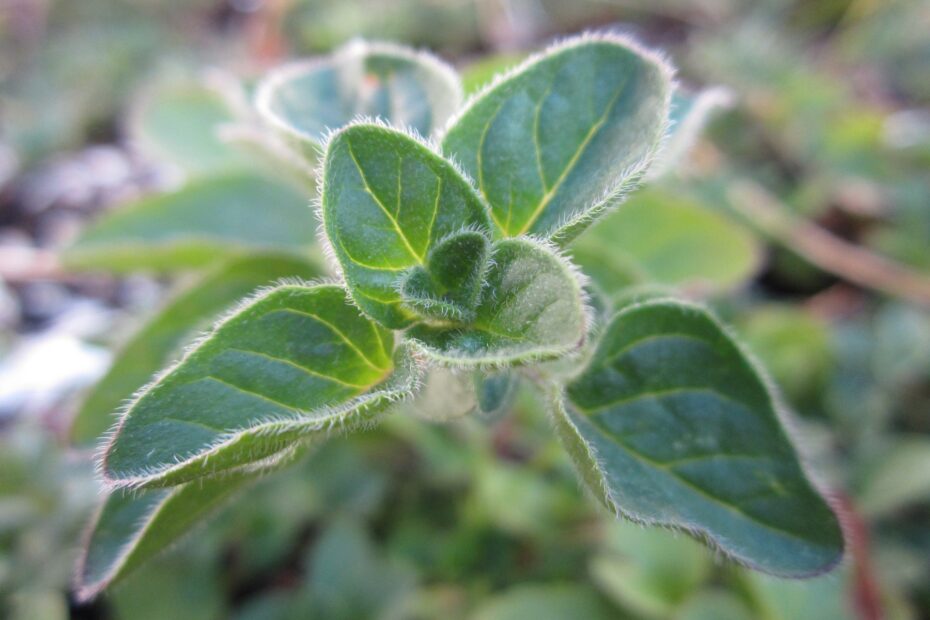Are you interested in growing wild za’atar? Za’atar (origanum syriacum) is an herb in the Lamiaceae (mint) family that is widely used in Mediterranean cuisine. Wild Za’atar is known by a variety of names: Syrian oregano, wild thyme, bible hyssop, Arabic oregano, and wild marjoram. It is indigenous to Lebanon, Syria, Jordan, and Israel. The plant is well adapted to arid/hot summers and cool/rainy winters in the hills of these regions of the Mediterranean. Depending on your geographic location, wild za’atar seeds can be started as either perennials or as annuals.
Is Wild za’atar The Same As The Cooking Spice?
Za’atar spice blend has been receiving more recognition recently due to the popularity of the Mediterranean Diet. When used as a cooking ingredient, the word za’atar commonly refers to a spice mixture. Typically, this is a blend of dried oregano, culinary sumac, sesame seeds, marjoram, thyme and sometimes salt. The individual spices and amounts of each can vary. Za’atar spice blend has a rich herby flavor with tangy and nutty undertones.
The wild za’atar plant, on the other hand, is a singular ingredient used as a dried herb in Mediterranean cuisine. Its flavor is described as merging hints of oregano, thyme and marjoram. It can be used as the base ingredient for the spice mixture described above.
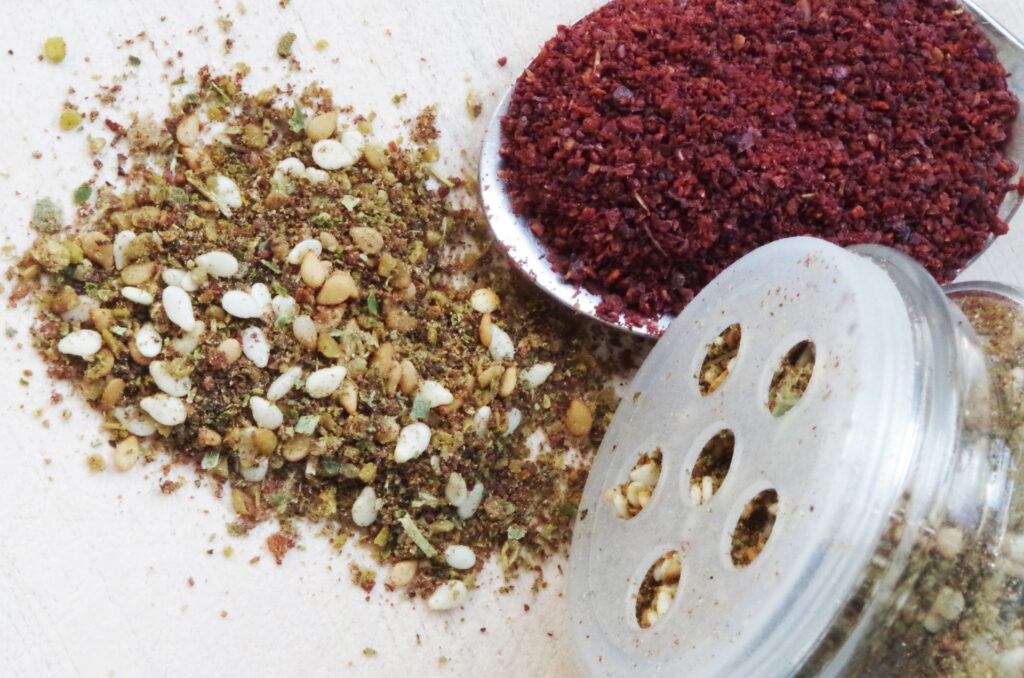
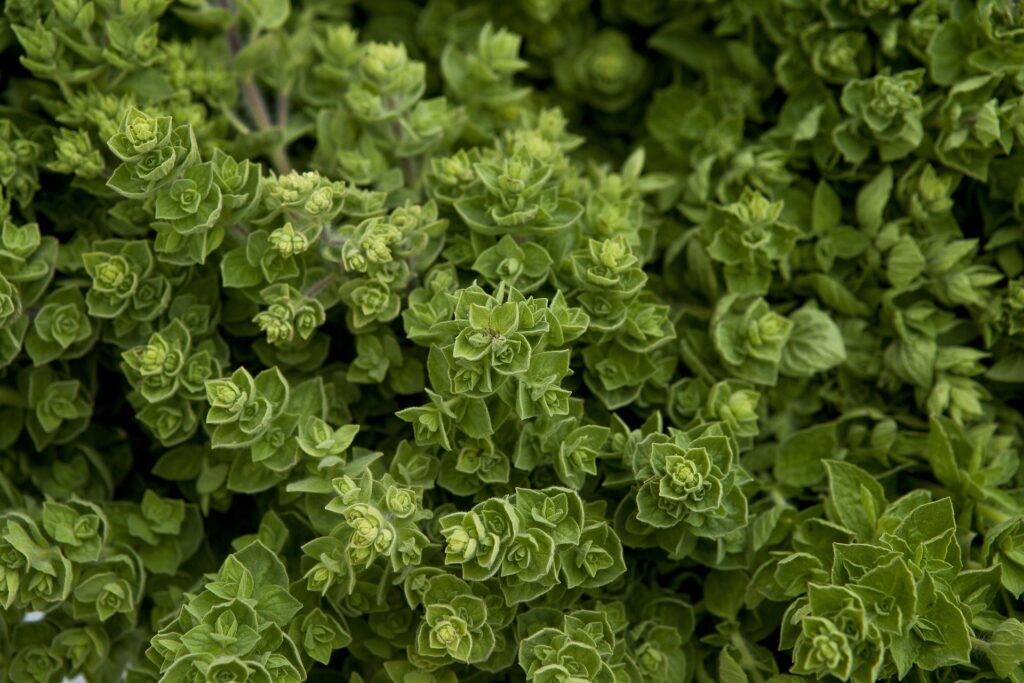
Wild za’atar Plant Description
Wild za’atar is a highly aromatic, woody, evergreen perennial native to the Middle East. It prefers full sun and a sandy, fast-draining soil. The plant typically grows in a mound and has hairy stems with velvety greyish-green leaves. Planting guides suggest it can grow up to three feet tall and three feet in circumference.
Wild za’atar will also flower with small white or purple blooms. When growing wild za’atar for culinary use, it is best to trim or pinch back the blooms for better leaf growth. Leaves can be used both fresh and dry when preparing recipes.
Is Wild Za’atar a Perrenial or An Annual Plant?
Wild za’atar can be grown as a perennial in USDA zones 9-11. A perennial plant is one that persists for many years with new growth that survives from growing season to growing season.
If you live in a colder climate that will not support wild za’atar’s preferred growing conditions, you can also plant it as an annual. An annual plant completes its life cycle in a single growing season. Dormant seeds are the only part of the plant that survive from one growing season to another.
You can also try growing wild za’atar as a container/patio plant in warmer months and bring it inside when temperatures dip. Like other herbs, however, it may struggle overwintering indoors.
The ease to start wild za’atar seeds is reported as moderate. But, once it takes hold, it seems to require little care. It is heat tolerant and has low water/low feeding requirements. Its biggest enemy is overwatering and root rot.
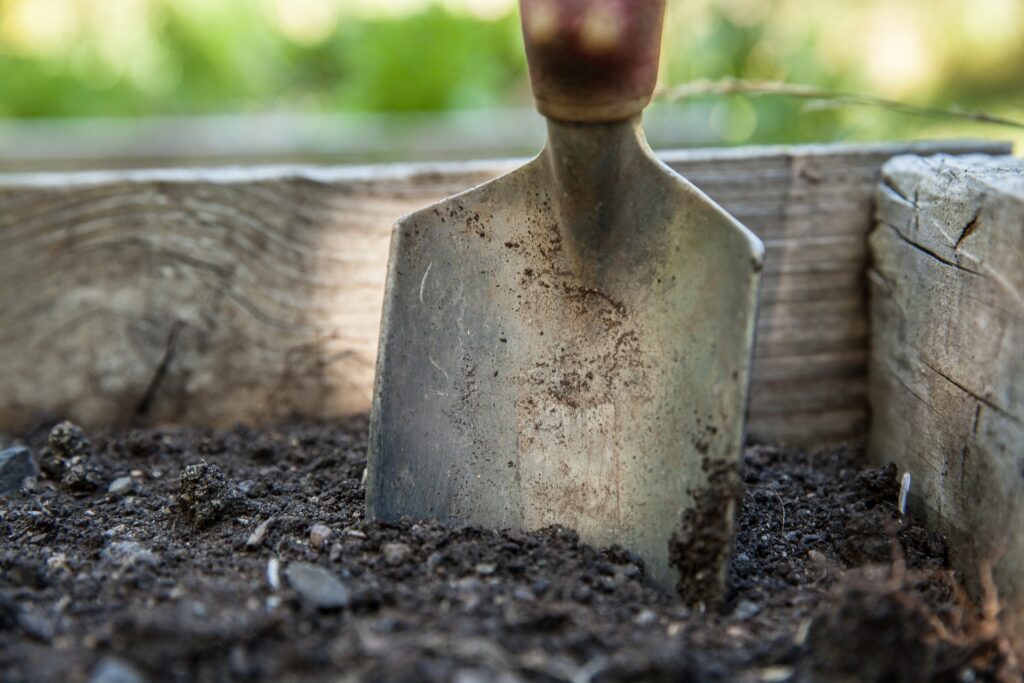
Sowing Wild Za’atar Seeds
I’m choosing to experiment with a couple of growing options this year; sowing outdoors as well as container gardening.
It is recommended to plant wild za’atar outdoors in a sunny location when soil temps are a minimum of 60 degrees. I live in the northeast, so I will have to wait for a while before I can sow safely outdoors.
I am, however, starting my container seedlings indoors to evaluate how well they will take hold and sprout in a climate-controlled environment.
Container Method
Because I am growing an herb that I’d like to cook with, I prefer my planting container be food-safe and free of toxins. I ended up making an unconventional choice: a stainless steel food bowl. I had difficulty finding a patio pot labeled BPA-free or food safe. This led me to thinking outside the box and choosing an actual food container. It had the added benefit of being a very cost-effective option.
I had a moment of concern that the metal might overheat in the sun and kill the roots. This plant, however, thrives in hot, arid, dry conditions. I can easily move it around on my patio or even partially bury the container in the edge of my raised garden bed. It could be easily removed and brought indoors when the weather gets colder or if there is a lot of rain in the forecast.
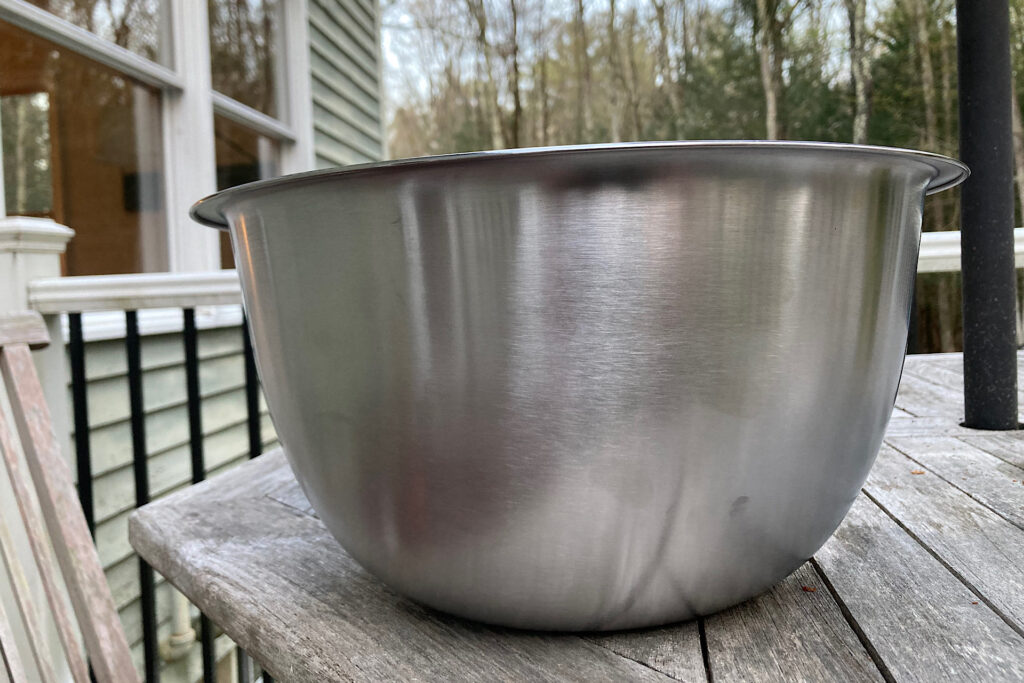
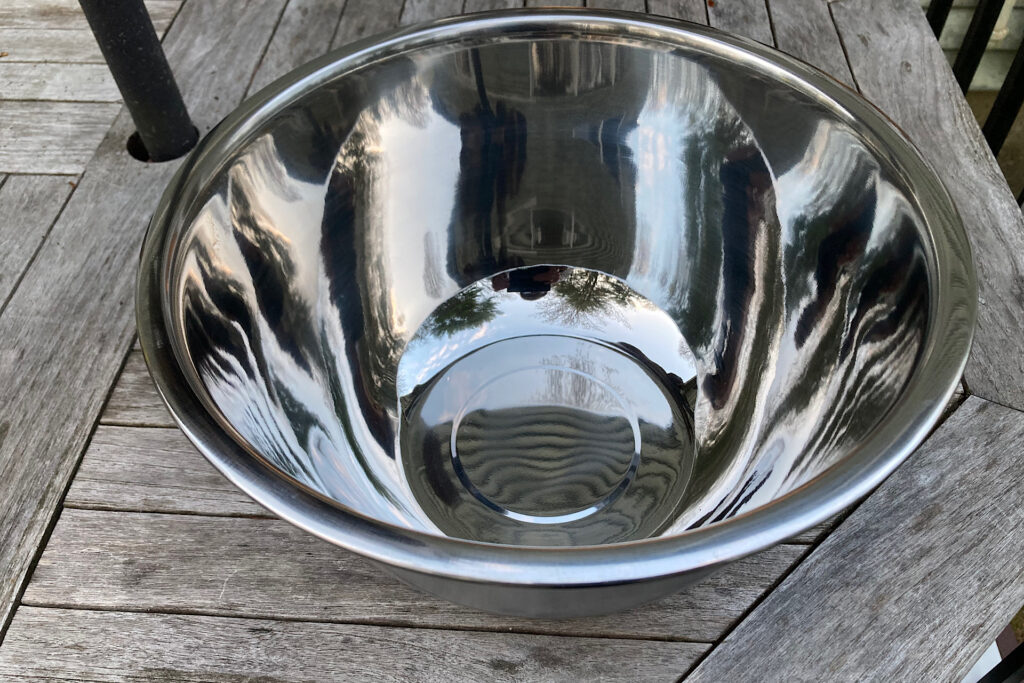
Of course, a stainless steel mixing bowl has no drainage. We used an awl to start holes in the bottom and then widened them with a 1/4″ drill bit.
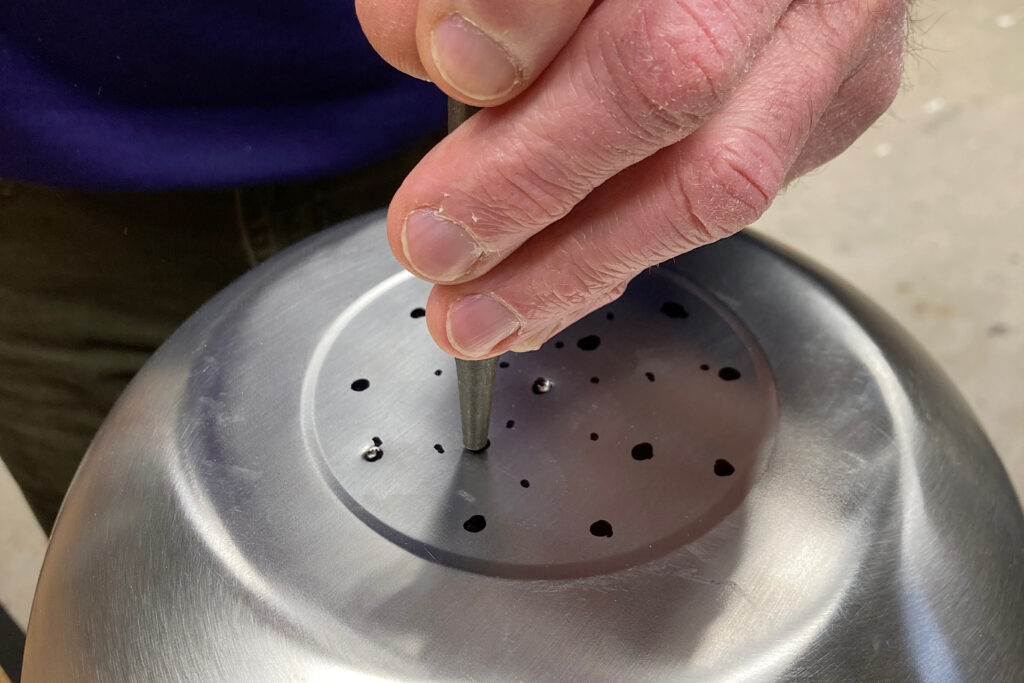
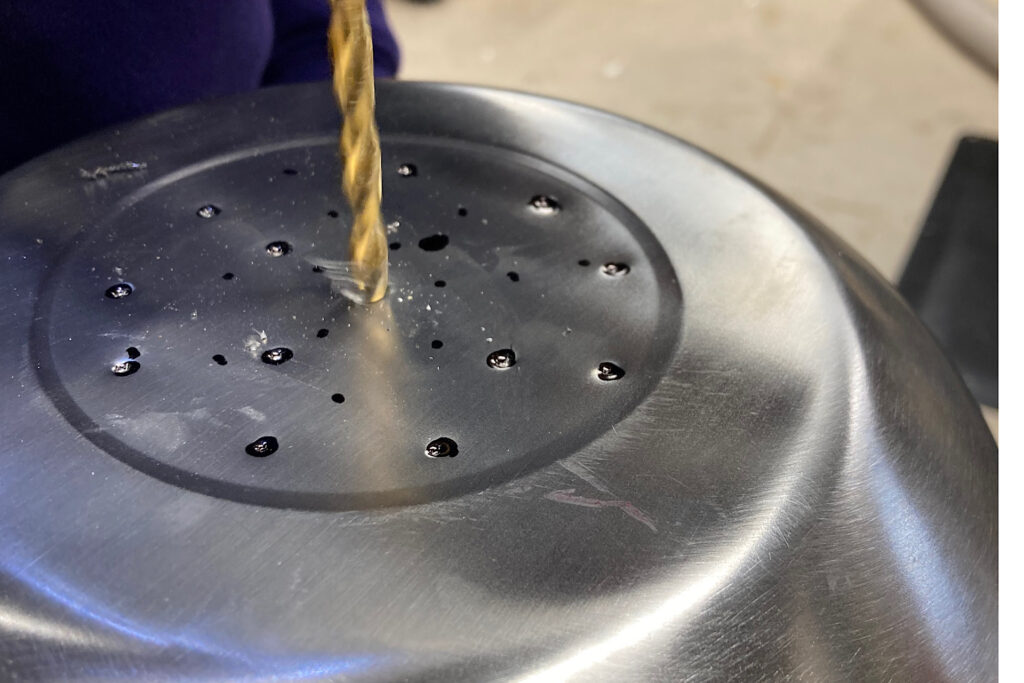
After the holes were drilled, I added a layer of crushed gravel to the bottom of the bowl for improved drainage. Remember, this is a plant that does not like wet feet! I filled the planter to the top with soil and was now ready to sow my first batch of wild za’atar seeds.
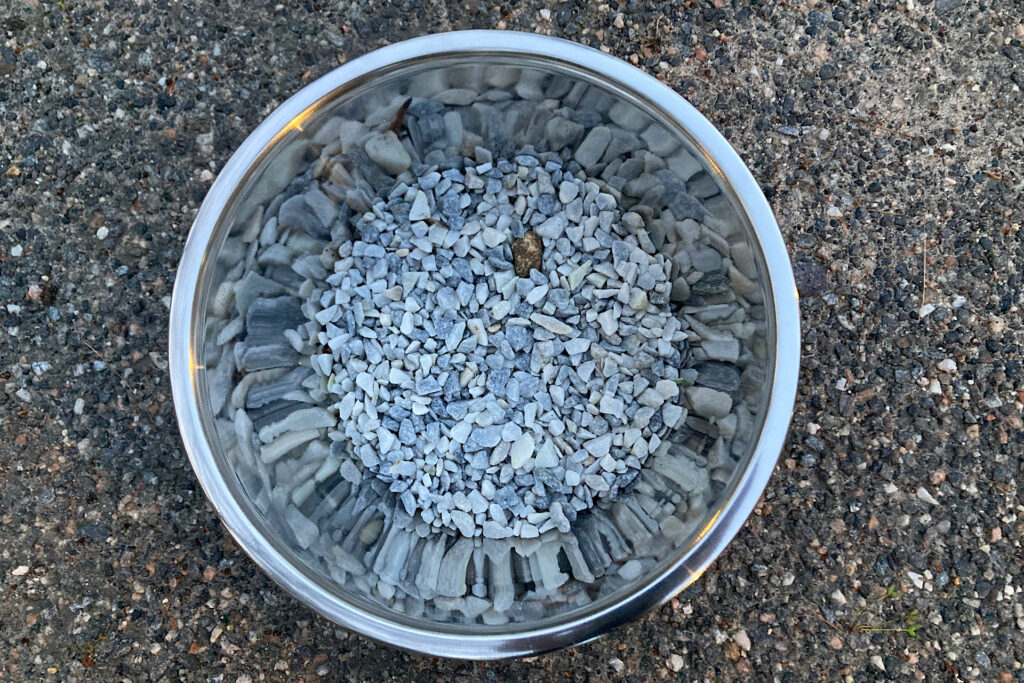
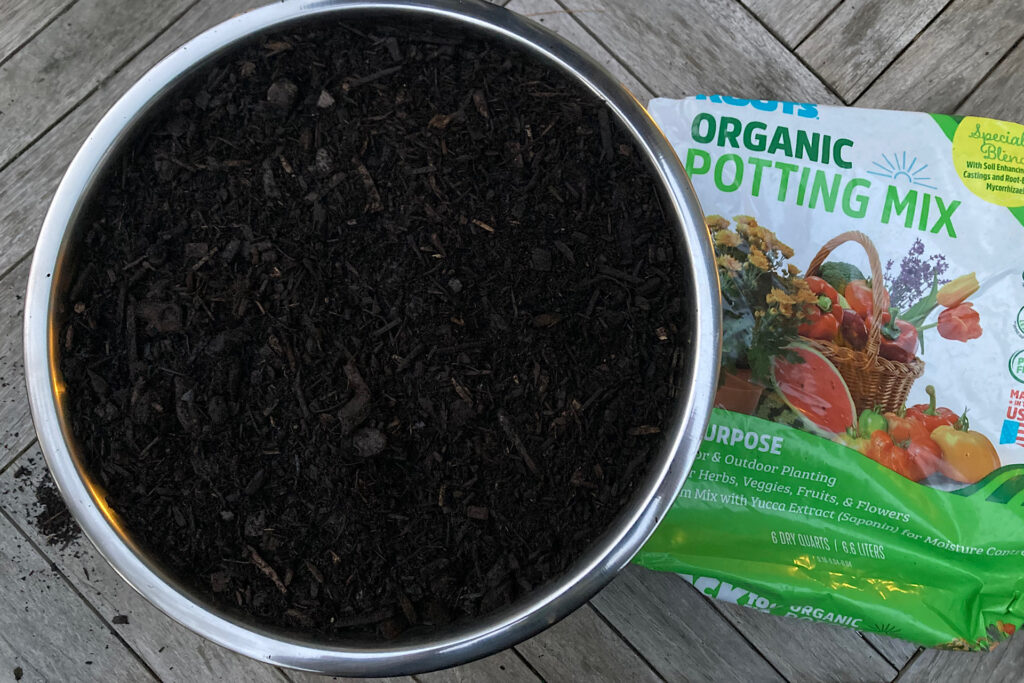
Sowing Wild Za’atar Seeds
I purchased two packets of seeds from Baker Creek. One for container planting and one for a sunny, gravelly hillside in the backyard. I am not paid to endorse Baker Seeds, but have used their products in the past and have had great success. I found za’atar seeds in their heirloom collection and couldn’t wait to try them.
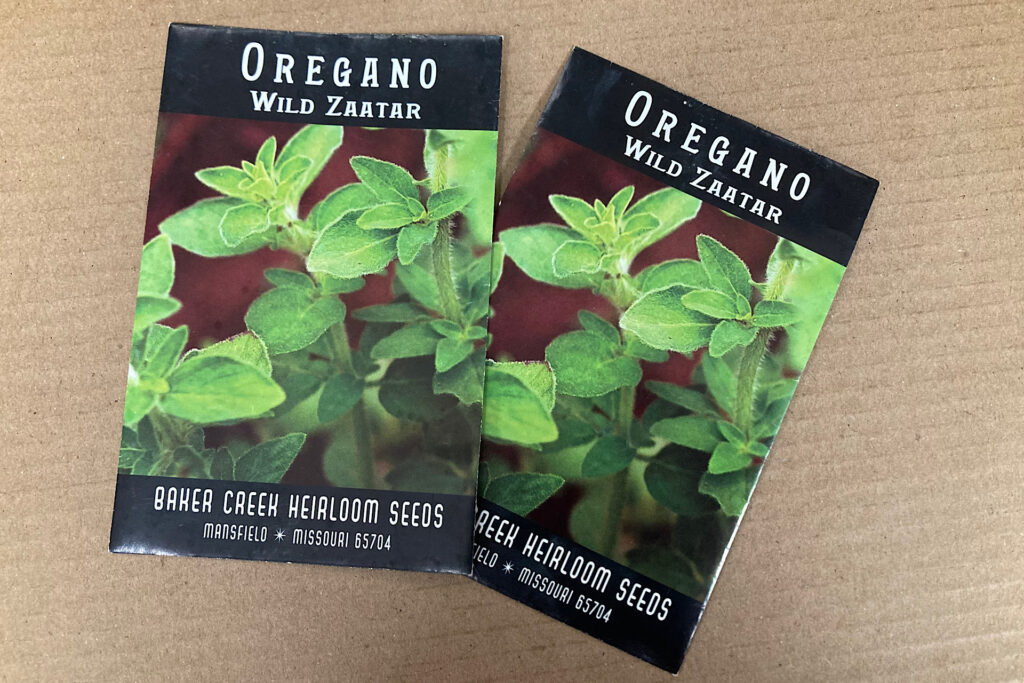
The seed packet states za’atar seeds require light for germination. The directions suggest surface sowing. This means sprinkling seeds on the soil surface and then gently pressing them into the soil. Baker Seeds also recommends a warm, dry planting site with somewhat alkaline soil. I chose to mist the soil with a water spray bottle, so the dirt was not soaked, but damp. I also left them uncovered to deter condensation.
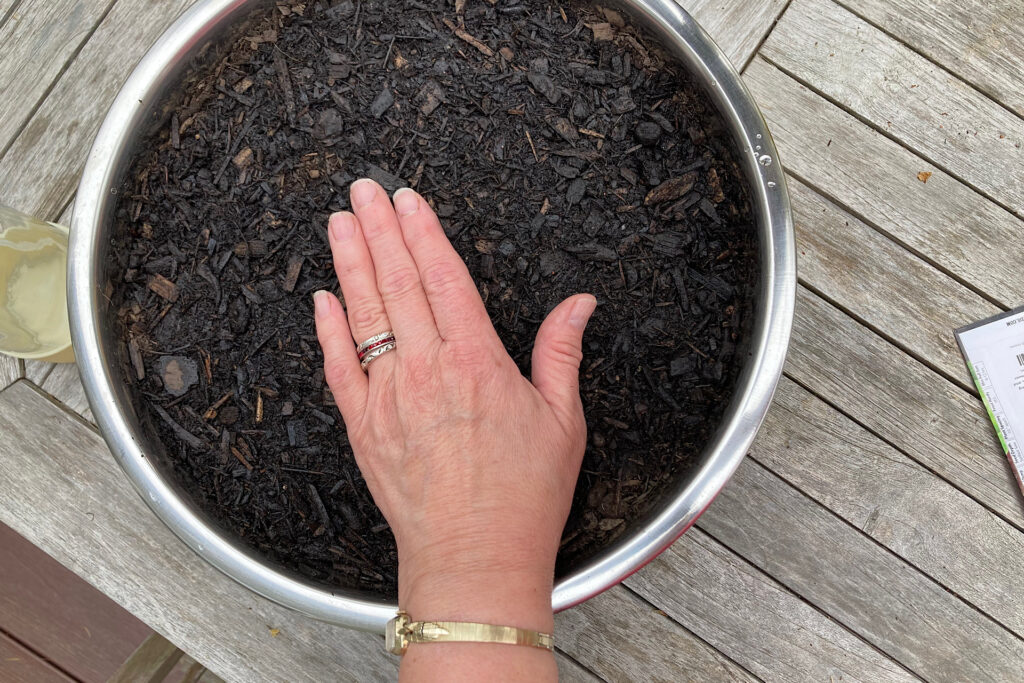
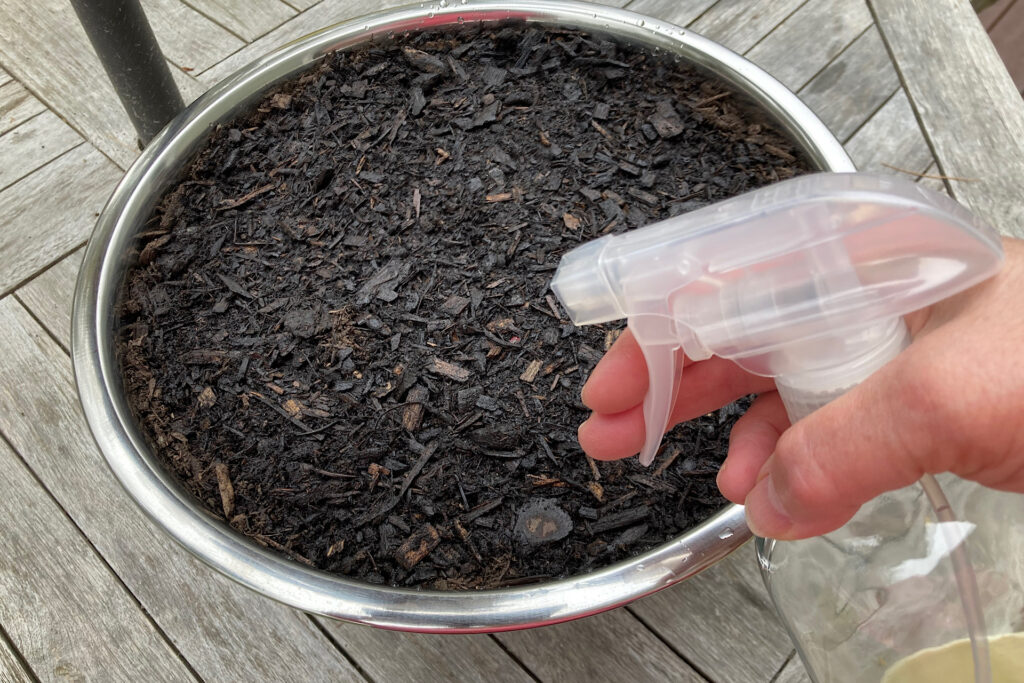
Germinating Wild Za’atar Seeds
I do have a grow light, but have had much better success with a homemade reflection box. This is merely a box lined with aluminum foil on all sides. Sun light is reflected from top, bottom, left and right. I place mine in front of a south-facing window. I think this is a good choice for wild za’atar based on it’s enironmental preferences. Once germinated, planting guides suggest if you are planting them outdoors to wait until seedlings reach 2″ in height and plant 3 or 4 of them together in clumps, spacing them approximately 6 inches apart from one another. Once they have established themselves, you can thin seedlings to the strongest plant in each grouping.
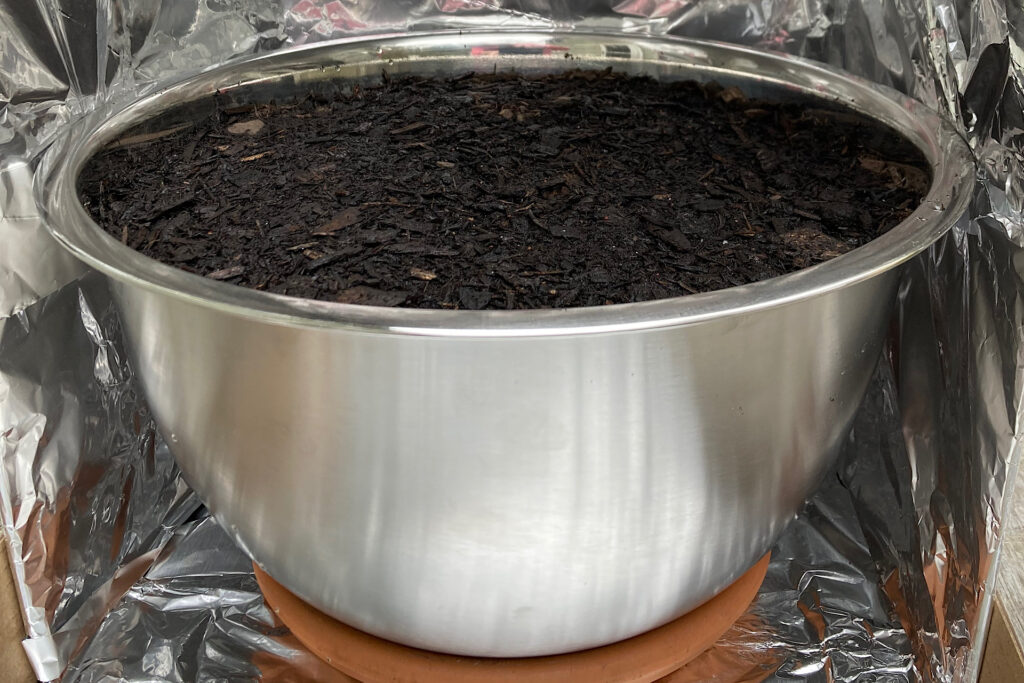
Baker Creek advises drying and harvesting leaves just when flowers begin to bloom. I am planting two containers. In one, I will harvest when the flowers begin blooming and the other, I will pinch back blossoms to see if I can encourage thicker foliage.
Let me know if you are interested in adding this herb to your garden – or if you already have, I would love hear your feedback!
